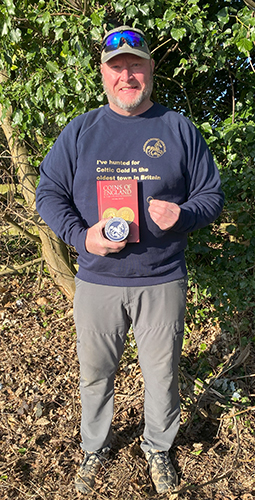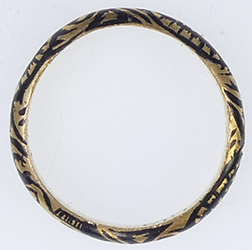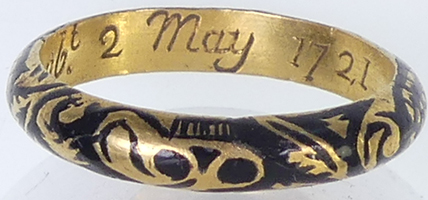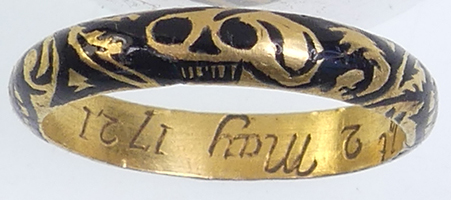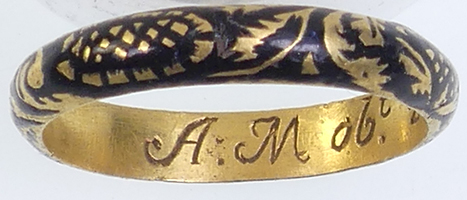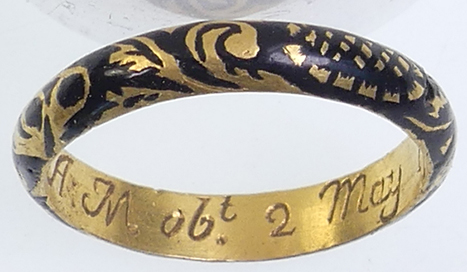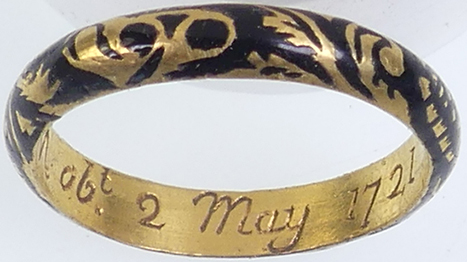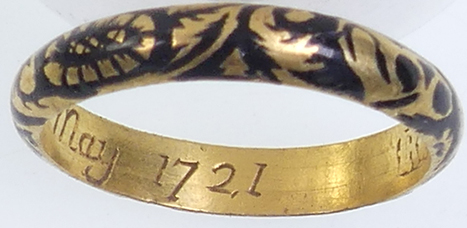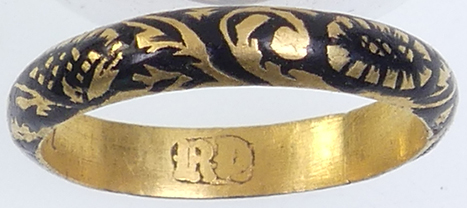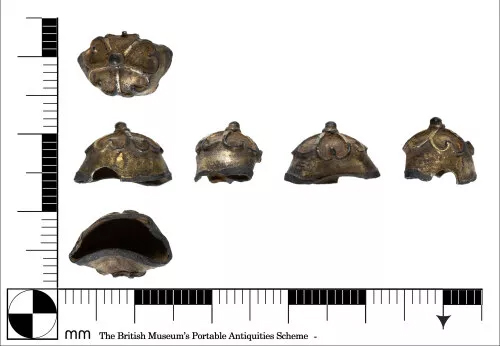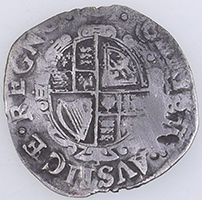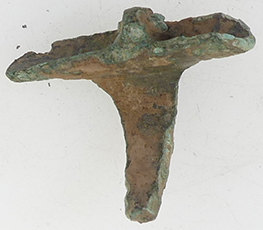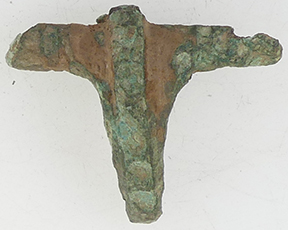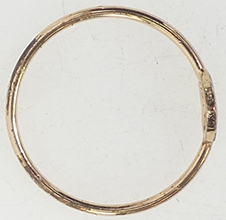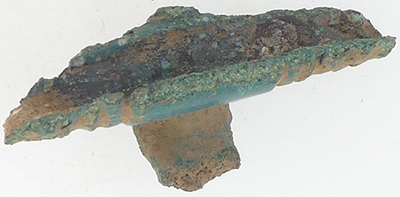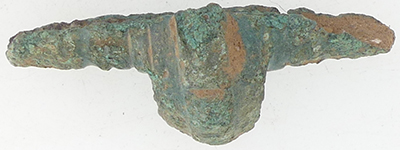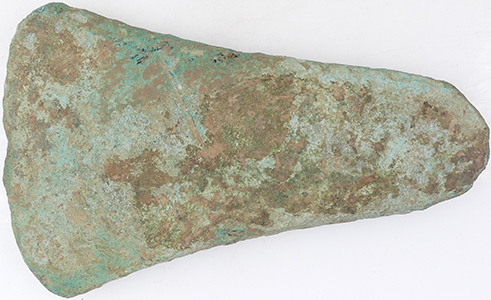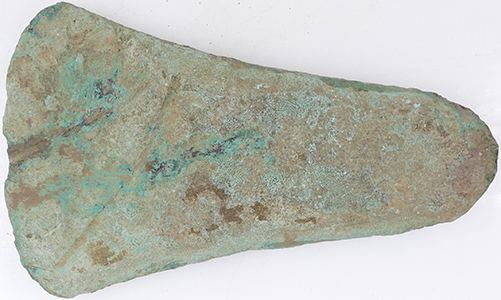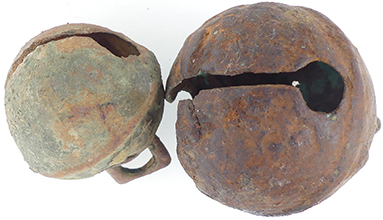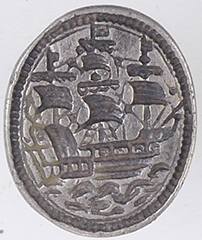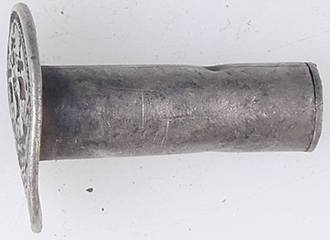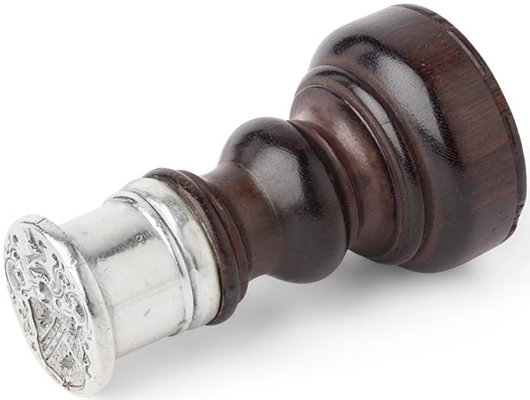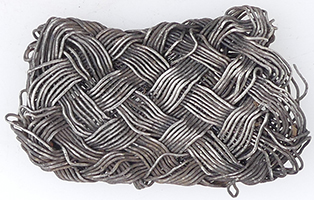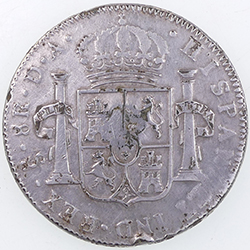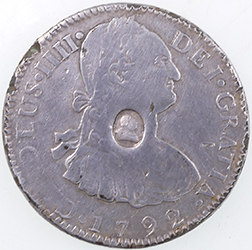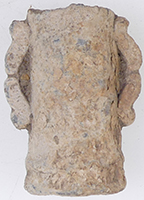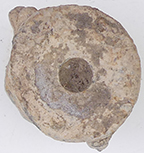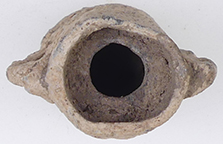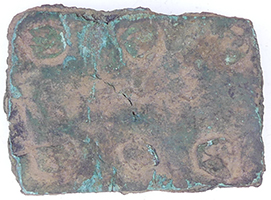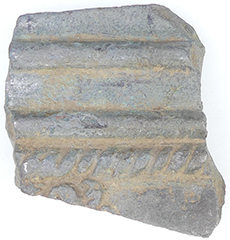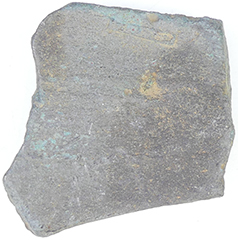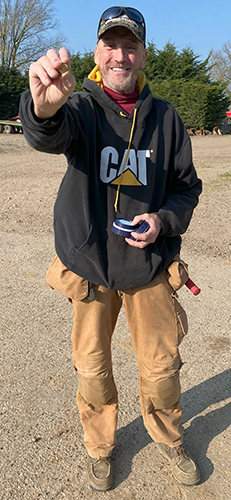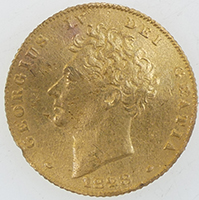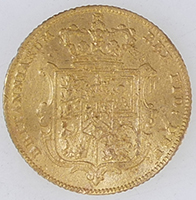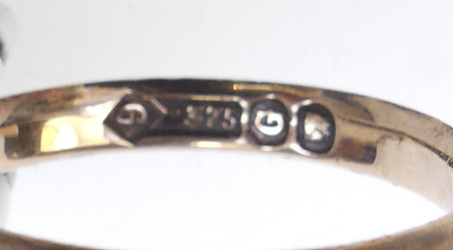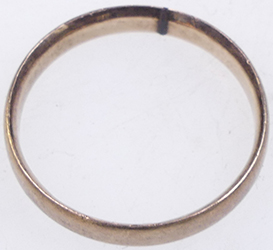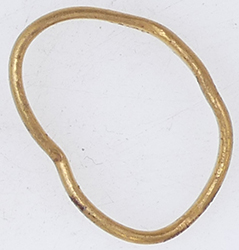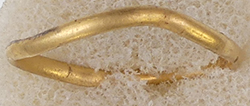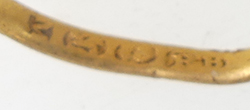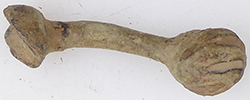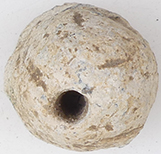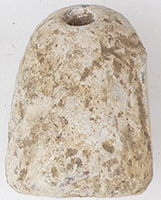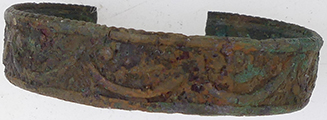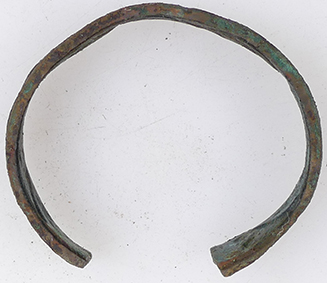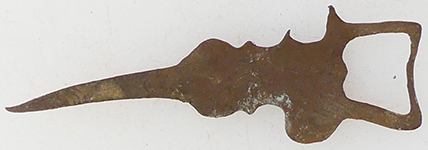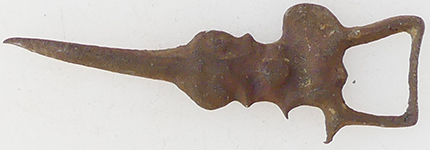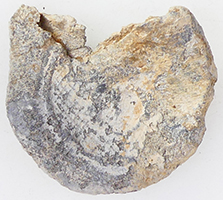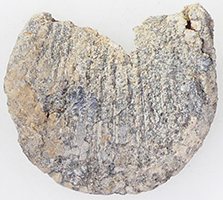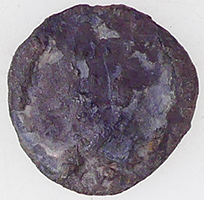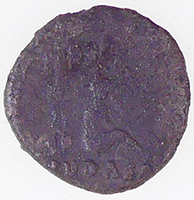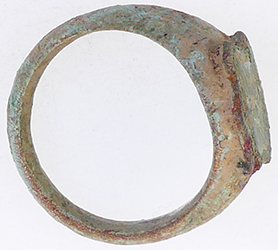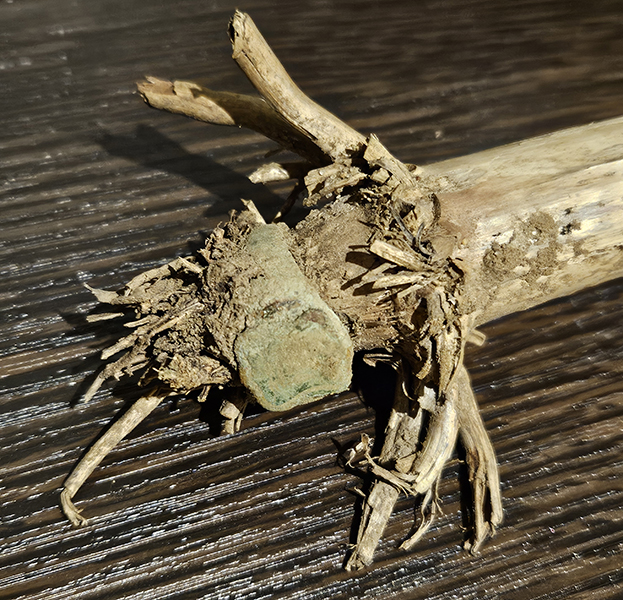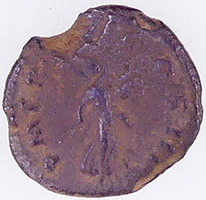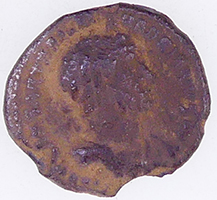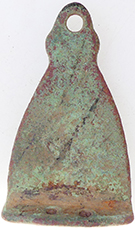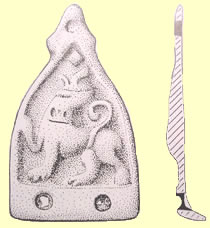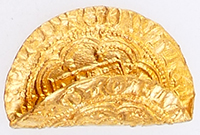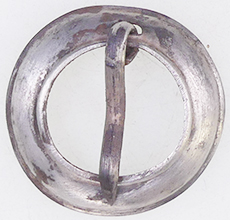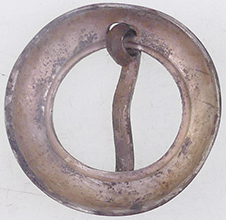
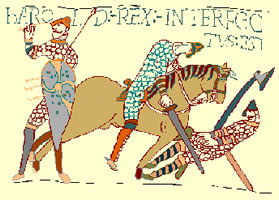
Metal detecting holidays in England with the World's most successful metal detecting club.20 years plus.
Twinned with Midwest Historical Research Society USA.
2025 March finds page
Tx Mike gets his freebies for the first monster find of the year
Note the skull engraving on the ring
Stunning 1721 Gold and black enamel mourning ring - reported as treasure A.M obt 2 May 1721 Maker RD 5g, 22.13mm |
Vir Phill found this in Sept and I reported it as potential treasure to museum as it had that classic 16thC construction. I just got it back disclaimed from the museum ID'd as a bosun's whistle. Record ID: ESS-6715AB - POST MEDIEVAL whistle. A fragment of a silver gilt bosun's whistle of post-medieval date (c.1500-1700). Description: The whistle remains as one half of the ovoid hollow of the whistle which would have been attached to a tube through which air would have been blown into the hollow. The hollow would have been constructed in two halves and joined at their bases. The remaining half has semi-circular cut out which, when joined to the other half would have created a circular opening, allowing the blown air to escape. The fragment is decorated with a raised design in the form of a flower with five heart-shaped petals and a raised knop at its centre. The fragment is slightly bent and retains much of its gilding. Measurements: height: 8.5mm; width: 13.4mm thickness: 9mm weight: 0.75g Discussion: More complete bosuns' whistles with the same decoration recorded on the database and submitted for the consideration as Treasure include SOM-77474D (2017T629) HAMP-D7F787 (2013T746) CAM-AEA9B6 (2018T1014); HESH-DB1922 (2010T456); LVPL-8EE474 (2015T412). These are all dated to within the range of c.1500-1700. |
|||
1625-6 Charles 1st hammered silver shilling (12 pence) - Cross Calvary mint mark 5.69g, 28.9mm |
|||
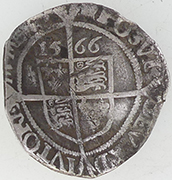 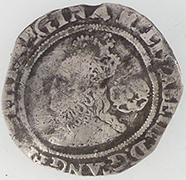 |
|
||
| 1566 Elizabeth 1st hammered silver sixpence - portcullis mint mark | 2nd Roman fibular brooch | ||
Gold ring - no hall marks - 0.57g, 20mm |
|||
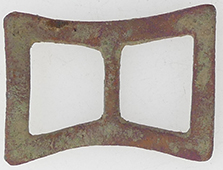 |
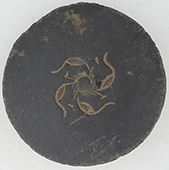 |
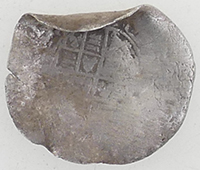 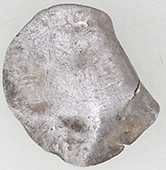 |
|
| 1500-1650 buckle | 18thC Navy button | 1625 Charles 1st hammered silver half groat | |
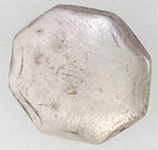 |
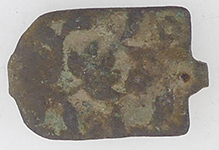 |
 |
|
| 18thC silver Royal navy button | 18thC clog fastener | Georgian ink well cover | |
 |
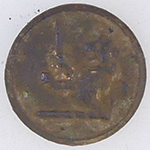 |
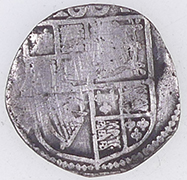 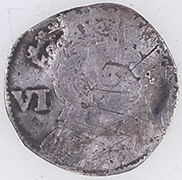 |
|
| 19thC livery button | 19thC livery button | 1603 James 1st hammered silver sixpence | |
 |
 |
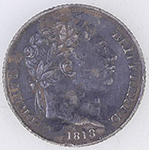 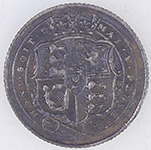 |
|
| Georgian button | Georgian button | 1818 George III milled silver sixpence | |
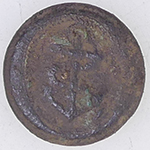 |
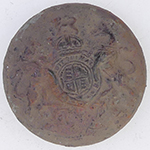 |
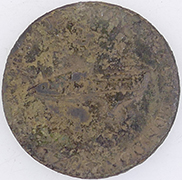 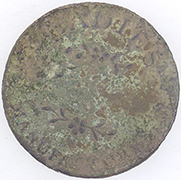 |
|
RN Capt / Commander - 1787 |
1890 Victorian General Service Button |
BRITISH TOKENS, Middlesex. Carter's. 1795. CU Halfpenny, 7.79g (17mm, 6h). CARTER 32 JERMYN STREET LONDON 1795, a lady's slipper / LADIES/ (floral ornament)/ SHOE */ (floral ornament)/ MANUFACTORY * in five lines. Edge: Milled References: D&H 276 |
|
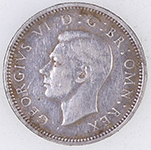 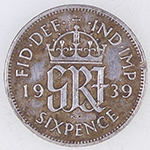 |
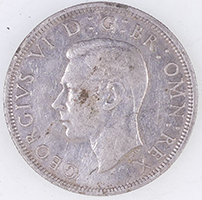 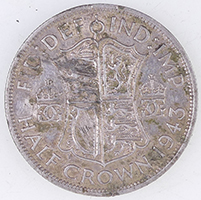 |
||
| 1939 George VI milled silver sixpence | 1943 George VI milled silver halfcrown | ||
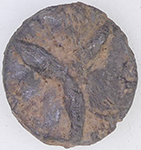 |
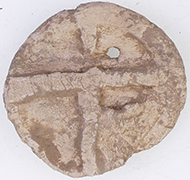 |
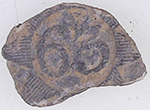 |
|
| 17thC lead token | Medieval lead pendant | Description: 63 incised within eight pointed star. Category: Regular Army; Type of button: Flat 22mm ; Metal: Pewter Date: c1800-1820 Notes: An officers example to the 63rd unusually with incised rather than raised numerals, known as the 63rd Regt of Foot 1758-1782 and then West Suffolk 1782-1881. |
|
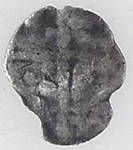 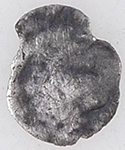 |
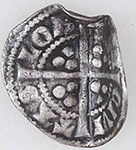  |
||
| Medieval hammered silver long cross farthing | 1310 Edward II hammered silver half penny Obv EDWARDVS REX' ANG Rev CIVI/TAS/LON/DON -London mint 0.65g, 14.76mm |
||
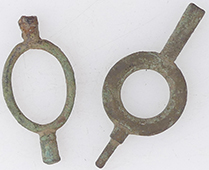 |
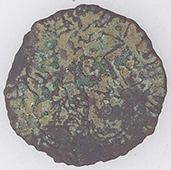  |
||
| 18th C watch winders | 17thC Continental jetton | ||
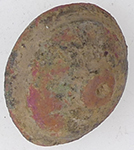 |
 |
 |
|
| 1500-1700 mount | Georgian button | Medieval buckle tongue | |
 |
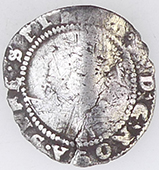 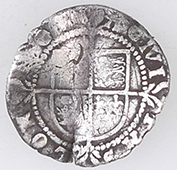 |
||
16thC stone cannon ball 40.6 mm dia |
1582-4 Elizabeth 1st hammered silver half groat - A mint mark | ||
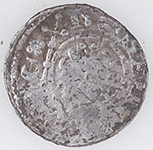 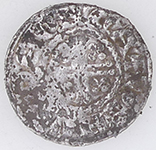 |
 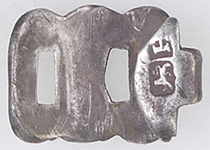 |
||
| 1216 Henry III hammered silver short cross penny | 1803 silver clog fastener | ||
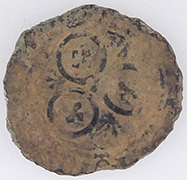 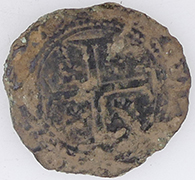 |
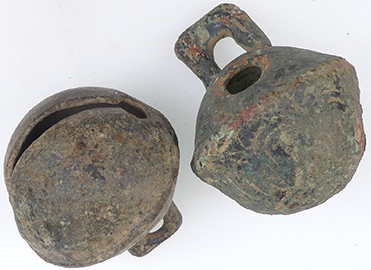 |
||
1430's French Charles VII Three circles type jetton - mint of Tournai Quatrefoils in circle Ref Mitchiner 607 |
18thC crotal bells | ||
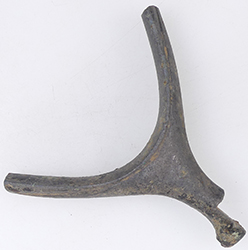 |
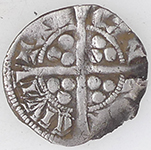 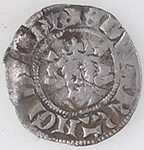 |
||
| Georgian spur | 1307 Edward III hammered silver penny -florin Obv +EDWARR ANGL DNS hYB Rev CIVI/TAS/CAN/TOR - Canterbury mint |
||
 |
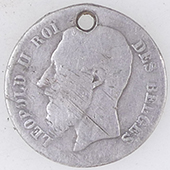 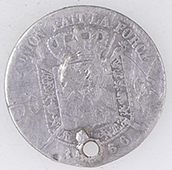 |
||
| Medieval lead trade weight | Belguim 1866 Leopold II 50 centimes milled silver coin | ||
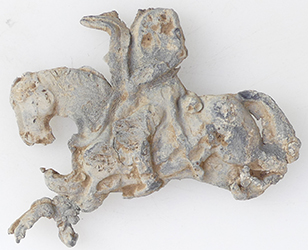 |
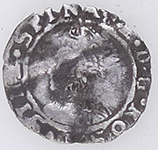 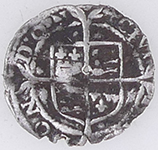 |
||
| Lead toy | 1578-9 Elizabeth 1st hammered silver penny - Greek Cross mint mark | ||
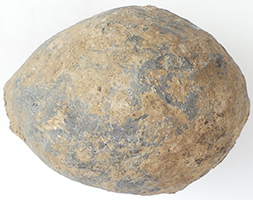 |
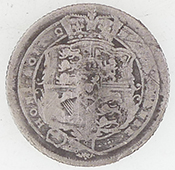 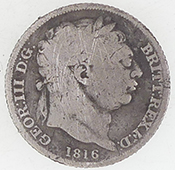 |
||
| Roman lead sling shot | 1816 George III milled silver shilling | ||
|
  |
||
| 2ndC Roman fibular brooch | 16thC Elizabeth 1st hammered silver sixpence | ||
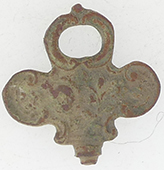 |
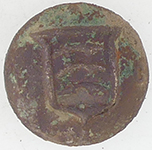 |
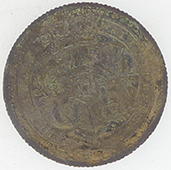 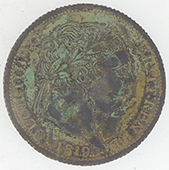 |
|
| Georgian watch winder | Essex police button | 1819 George III milled silver shilling - forgery | |
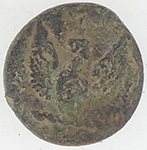 |
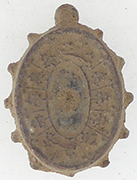 |
  |
|
| 19thC livery button | Georgian pill box lid | Continental hammered silver coin | |
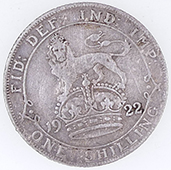 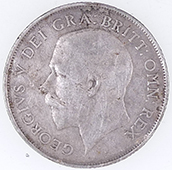 |
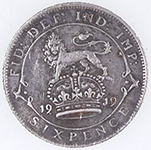 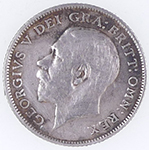 |
||
| 1922 George V milled silver shilling | 1922 George V milled silver sixpence | ||
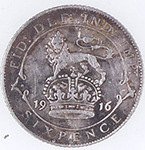 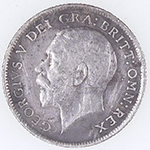 |
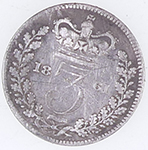 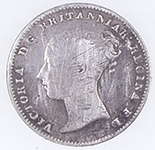 |
||
| 1916 George V milled silver sixpence | 1861 Victoria milled silver three pence | ||
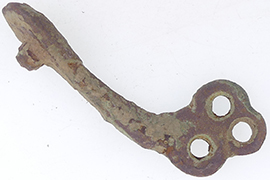 |
 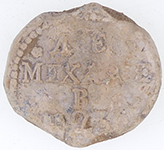 |
||
| Medieval spur | 1772 Russian lead bale seal | ||
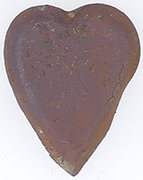 |
 |
 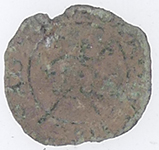 |
|
| 1500-1700 copper locket | Georgian silver buckle | 1634 Charles 1st hammered silver rose farthing | |
2000 BC Bronze Age flat axe 111mm L x 67mm W x 9.66 mm T - 303g |
|||
  |
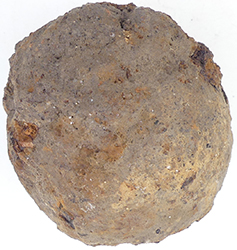 |
||
| 1247 Henry III hammered silver voided long cross halfpenny | 1640's Civil War iron cannon ball 203g, 1/2 lb
|
||
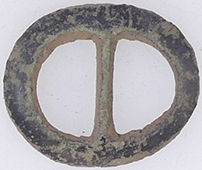 |
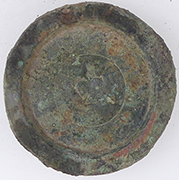 |
 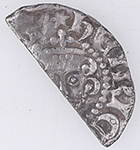 |
|
| Georgian buckle | Georgian trade weight | 1247 Henry III hammered silver voided long cross halfpenny Rev OLE/ONL - Moneyer Nicole of London mint |
|
 |
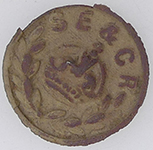 |
||
| Georgian button | Pattern 2 (c1899 to c1901)Folkestone, Sandgate and Hythe TramwaysOwner Folkestone, Sandgate and Hythe Tramways Company Opened 18th May 1891 (horse) Operator Folkestone, Sandgate and Hythe Tramways Company Taken over 1893 (South Eastern Railway Company - a major shareholder from the outset) Owners name changed 1st August 1899 (to the South Eastern and Chatham Railway, following the amalgamation of the SERCo with the London Chatham and Dover Railway Company) Closed 30th September 1921 Length 3.36 miles Gauge 4ft 8½ins Button description (Pattern 1) Company initials ('SER') above a Victoria Crown and laurel wreath, all within a roped rim Materials known Brass/gilt; nickel (latter for police only) Button Line reference [None] Button description (Pattern 2) Company initials ('SECR') above a Victoria Crown and laurel wreath, all within a roped rim Materials known Gilt; nickel (latter for police only) Button Line reference [None] Button description (Pattern 3) Company initials ('SECR') above a King's Crown and laurel wreath, all within a roped rim Materials known Gilt; nickel (latter for police only) |
||
18thC crotal bells |
|||
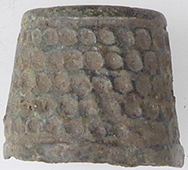 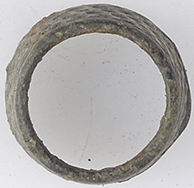 |
 |
||
| 15th C open topped thimble | 18th/19thC yhimbles | ||
|
|||
| 18thC silver seal matrix | |||
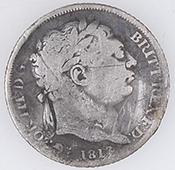 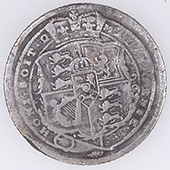 |
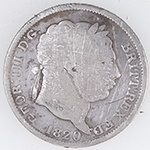 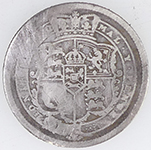 |
||
| 1817 George III milled silver sixpence | 1820 George III milled silver sixpence | ||
Unknown silver weave ring/bracelet - sent to museum for their views as these start early in date 6.9g,39.1mm L x 21.67mm W |
|||
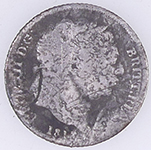 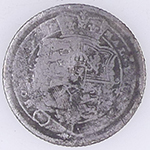 |
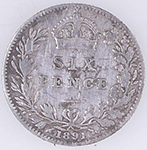 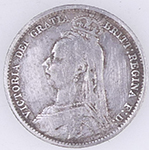 |
||
| 1817 George III milled silver sixpence | 1891 Victoria milled silver sixpence | ||
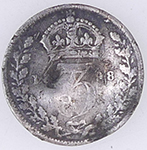 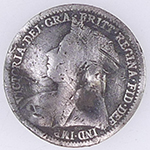 |
|||
| 1898 Victoria milled silver three pence | |||
George III oval counter mark Dollar 1792 - look like a Santiago mint, 27.6g, 39.8mm CARLOS IV. 8 reales. 1792. Santiago. DA. C sobre R en CAROLUS. AR 26,6 g. 40 mm. VI-834 var.; AC-1021. Golpes en anv. y hoja en rev. MBC-/MBC. Muy rara.
George III (1760-1820), oval countermark upon Spanish Eight Reales of King Charles IIII (1788-1808), 1792 FM, , small oval hallmark of George III right at centre of obverse, bust of Spanish King laureate and draped right, date below, legend and toothed border surrounding, CAROLVS.IIII. DEI. GRATIA, rev. crowned quartered shield of arms, pillar with ribbon motto either side PLUS ULTRA, legend surrounding, .HISPAN. ET IND. REX. S. 8R.DA. weight 26.92g (ESC 129; Bull 1852; S.3765A). These emergency countermarked coins were struck in relation to a crisis with the silver coinage at the end of the 18th Century where the supply of silver in commerce and for the Mint had dwindled due to the Wars in France after the Revolution in 1797. From March 1797 the Bank of England therefore released stocks of its Spanish dollars each with an oval countermark valued at 4s and 9d for currency. They did not really alleviate the problem of smaller change and were issued on an off with the oval countermark until a more complex larger octagonal mark replaced them from January to May 1804, as the oval pieces were being counterfeited. Eventually the octagonal replacements were also copied widely and the ultimate solution was to have the Soho Mint totally overstrike the Spanish Dollars with the Bank of England design. |
|||
|
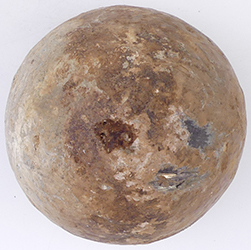 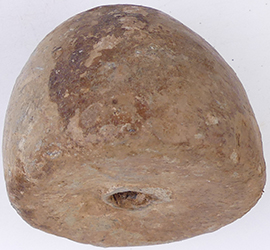 |
||
| Unknown widget | Large post medieval steel yard weight | ||
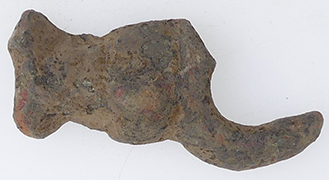 |
|
||
| c10thC Saxon harness cheek piece | Victorian bone handles pen knife | ||
1618 Spanish hammered silver half reale, Phillip 1.81g, 18.65mm
|
|||
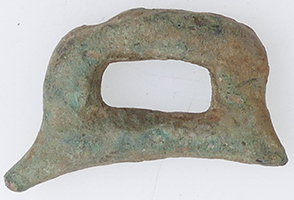 |
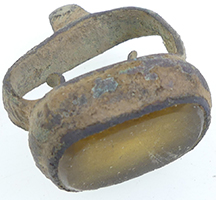 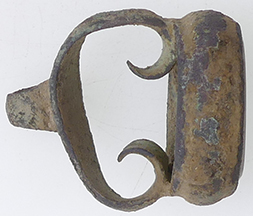 |
||
| Roman loop terret | Georgian fob seal | ||
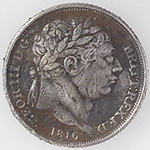 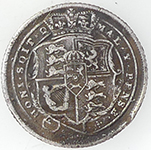 |
  |
||
| 1816 George III milled silver sixpence | Post medieval lead bird | ||
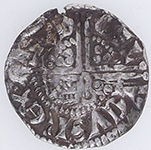 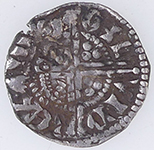 |
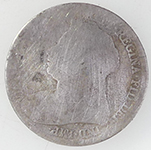 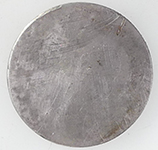 |
||
1247 Henry III hammered silver voided long cross penny Double struck reverse - London mint |
19thC Victoria milled silver sixpence | ||
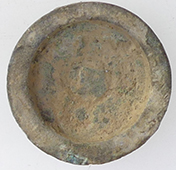 |
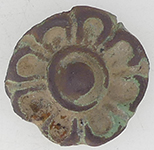 |
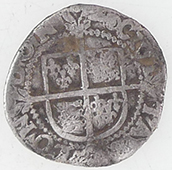 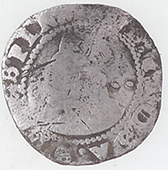 |
|
| Georgian trade weight | Medieval mount | 1595 - 1598 Elizabeth 1st hammered silver half groat - Key mint mark | |
  |
 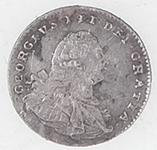 |
||
| 1922 George V milled silver shilling | 1800 George III milled silver penny | ||
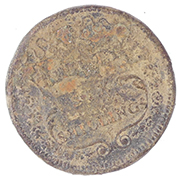 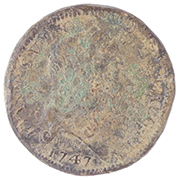 |
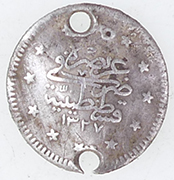 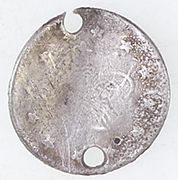 |
||
| 1747 Joannes V Portugal Copper Thirty Six Shillings | Unknown Arabic coin - researching it - ID'd by NY Dale 1915 NGC AU 58 Turkey 10 Kurush 1327//7 Ottoman El Ghazi Silver Coin
|
||
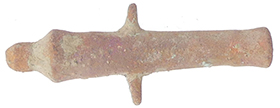 |
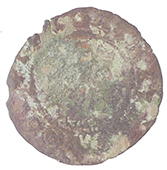  |
||
| 18thC toy cannon | 1668 'His halfpenny' hammered copper trade token | ||
 |
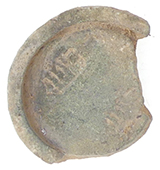 |
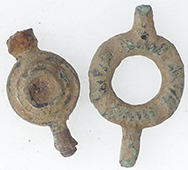 |
|
| Roman mount | Georgian trade weight | Georgian watch winders | |
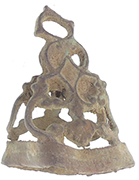 |
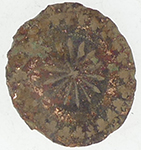 |
  |
|
| Georgian fob seal holder | Georgian button | Medieval pendant | |
 |
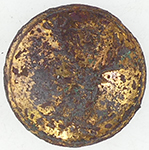 |
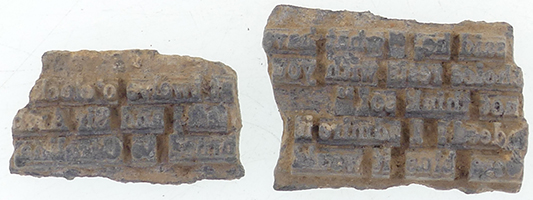 |
|
| 19thC livery button | 19thC printing press blocks | ||
 |
 |
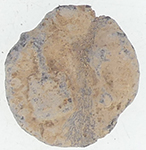 |
|
Crown VR Royal Engineer Department In use by 1855- 1901 |
1855-1881 THE 23RD REGIMENT OF FOOT c 1800 / After 1881 :- The Royal Welsh Fusiliers |
16thC Elizabethan lead illegal tavern token Bottle and glass design |
|
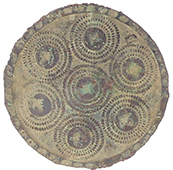 |
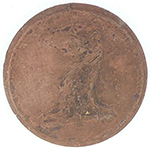 |
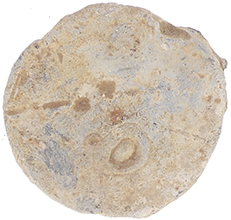 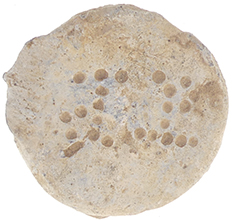 |
|
| Georgian button | 19thC livery button | Post medieval lead trade weight | |
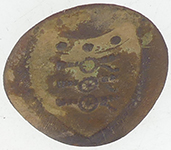 |
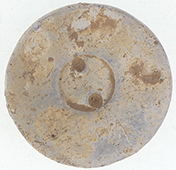 |
  |
|
| 18thC Royal Artillery button | Post medieval hem weight | 1818 George III milled silver shilling | |
 |
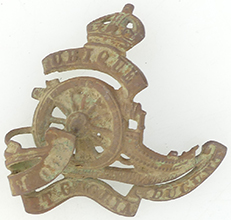 |
 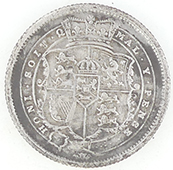 |
|
| 17thC lead token | WWII Rpyal Artillery badge | 1816 George III milled silver shilling | |
Two piece set made up from the grooved base and the small grinding tool 1stC BC to 1stC AD Celtic Woad cosmetic grinder - boat shaped The grinder was used to pulverise vegetable material such as woad in the preparation of dyes. These are also known as perfume or cosmetic grinders. During the Celtic period in Britain a biennial herb called Isatis Tinctoria; was cultivated for the blue dye that could be obtained from it when crushed. This plant is also known as woad. The dye would then be applied to the skin 53.5mm L x 8.5 mm W |
|||
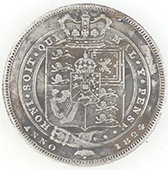  |
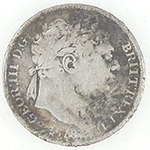  |
||
| 1824 George IV milled silver shilling | 1818 George III milled silver sixpence | ||
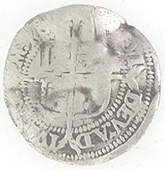 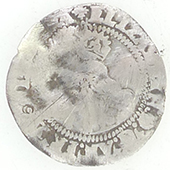 |
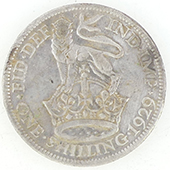 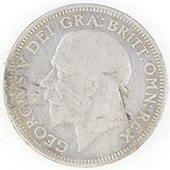 |
||
| 1560 - 1561 Elizabeth 1st hammered silver half groat - Cross crosslet mint mark | 1929 George V milled silver shilling | ||
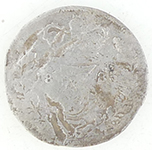  |
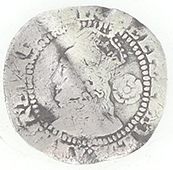  |
||
| 1885 Victoria milled silver three pence | 1578 - 1579 Elizabeth 1st hammered silver half groat - Greek cross mint mark | ||
 |
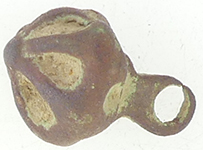 |
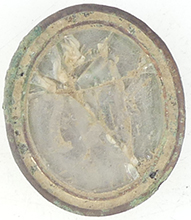 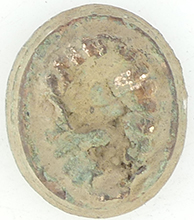 |
|
| 1500-1700 mount | 16thC Tudor button | Georgian fob seal | |
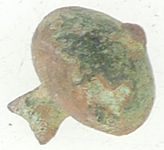 |
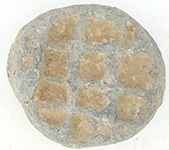 |
  |
|
| 16thC Tudor button | 17thC lead token | Roman silver knee brooch | |
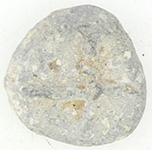 |
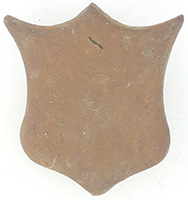 |
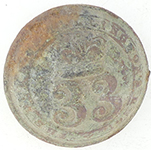 |
|
| 15thC lead token | 1500-1700 mount | Officer - 1848-1853 THE 33RD REGIMENT OF FOOT. / After 1881 :- 1st Battalion The Duke Of Wellington's (West Riding) Regiment |
|
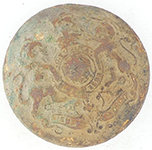 |
 |
  |
|
| Victorian General Service Army button | 19thC livery button | Medieval gilded hanger | |
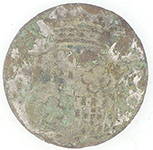 |
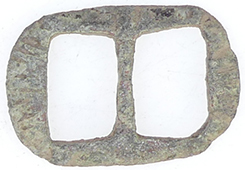 |
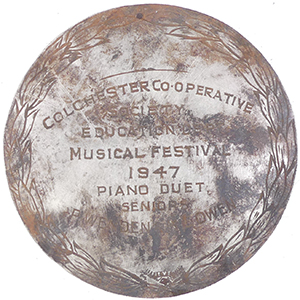 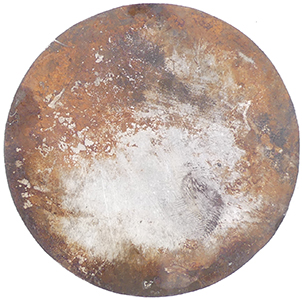 |
|
| 19thC livery button | 1500-1650 buckle | 1947 Colchester Co-Operative Musical Festival Piano Duet Seniors winners badge | |
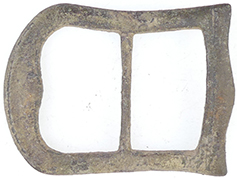 |
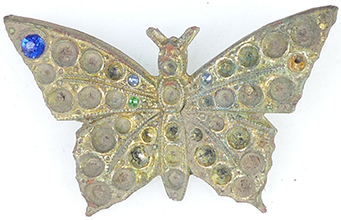 |
|
|
| 1500-1650 buckle | Victorian brooch | Medieval riveted plate | |
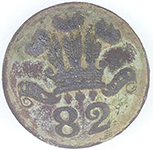 |
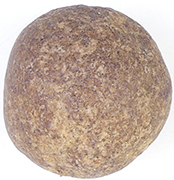 |
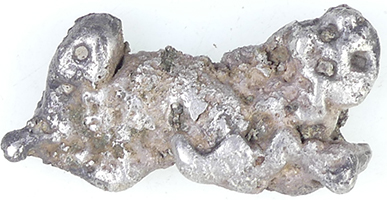 |
|
Description: 82 under Prince of Wales feathers. Category: Regular Army; Type of button: Slightly convex 22mm ; Metal: Copper Alloy silvered; Backmark: CHARLES JENNENS LONDON Date: c1808-1820
|
16th Stone cannon ball 16.7g, 23.2.mm dia |
Silver casting waste 14.82g, 34.8mm L |
|
Unknown very thick bronze decorated pot fragment |
|||
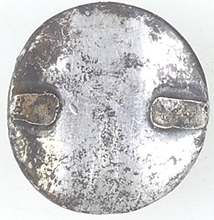 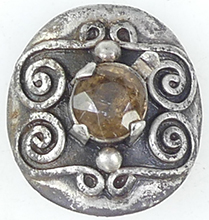 |
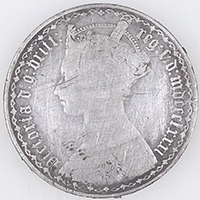 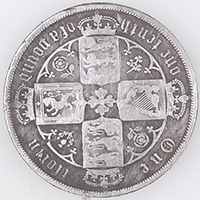 |
||
| Interesting silver ring top - no hallmarks - sent it to museum for their views as it is difficult to date | 1881 Victoria milled silver florin (24 pence) | ||
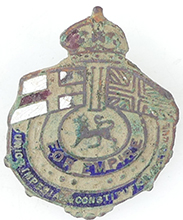 |
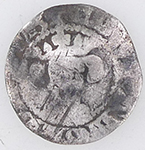 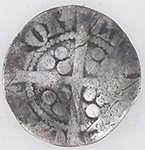 |
||
Junior Imperial Constitutional League For Empire Enamel Badge A circular lapel badge consisting of yellow metal. The central detail shows a lion statant surrounded by a blue enamel border that reads "FOR EMPIRE", with a second larger blue enamel border that reads "JUNIOR IMPERIAL & CONSTITUTIONAL LEAGUE". Above the central detail is the flag of the St George's cross, coloured with white and red enamel, and the Union Jack, coloured with red, white and blue enamel. The flags are surmounted by a King's crown coloured with red enamel. ON the reverse is a buttonhole fastening. The 'Junior Imperial and Constitutional League' was formed in 1906 with objectives to encourage practical political work and organisation among the young Conservatives in Britain. |
1279 Edward 1st hammered silver penny Obv EDWR ANGLE DNS hYB Rev CIVI/TAS/CAN/TOR - Canterbuty mint
|
||
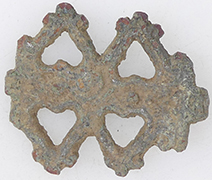 |
 |
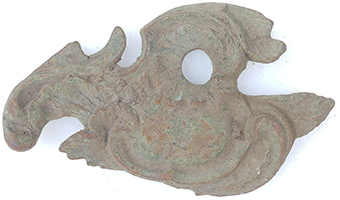 |
|
| 1500-1700 mount | Union padlock face | Georgian mount | |
 |
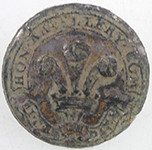 |
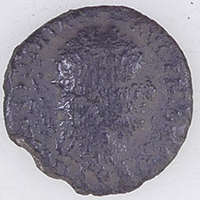 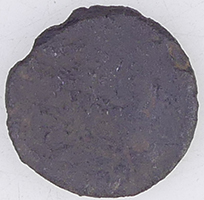 |
|
| Georgian silver thimble | Georgian Honourable Artillery Company button | 2ndC Roman silver coin - needs cooking to remove crust | |
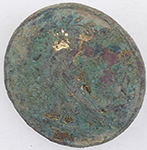 |
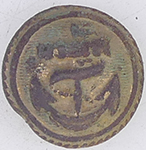 |
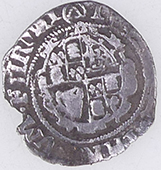  |
|
| 19thC livery button | 1990's Generic merchant navy button | 1641-3Charles 1st hammered silver half groat - Triangle in circle mint mark | |
Kerry's first gold coin in 25 years of detecting
1828 George IV milled gold half sovereign 3.96g, 19.31g |
|||
1882 - 9 Carat gold ring - London date letter G 1.76g, 19.5mm |
|||
1807 - 22 carat gold ring - 1.51g, 21.5mm - London date letter M Maker PB |
|||
 |
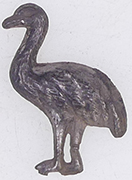 |
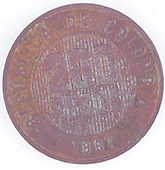 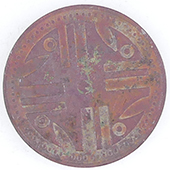 |
|
| 18thC silver button | Victorian silver charm | 1997 Columbia 200 pesos copper coin | |
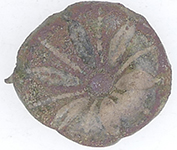 |
 |
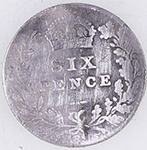 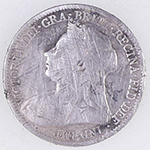 |
|
| Medieval mount | Edwardian pendant | 1885 Victoria milled silver sixpence | |
 |
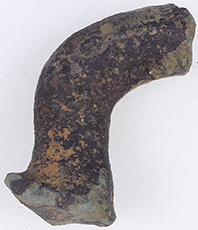 |
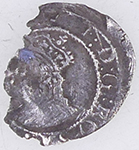  |
|
| 1500-1700 buckle | Medieval bronze pot leg | 16thC Elizabeth 1st hammered silver penny | |
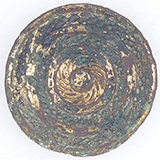 |
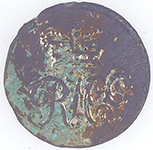 |
  |
|
| Georgian button | Researching RMG ? |
1816 George III milled silver sixpence | |
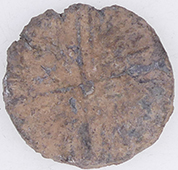 |
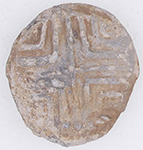 |
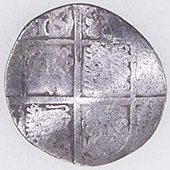 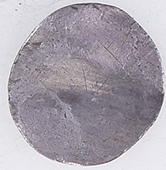 |
|
| 15thC lead token | 15thC lead token | 1580 Elizabeth 1st hammered silver three pence | |
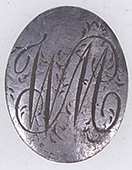 |
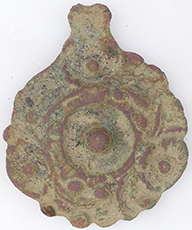 |
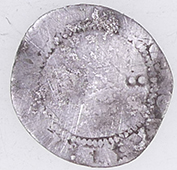  |
|
| Georgian silver cufflink | Victorian mount | 16thC Elizabeth 1st hammered silver half groat | |
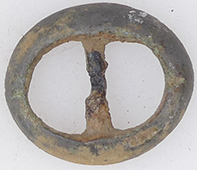 |
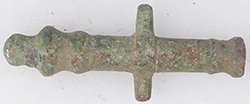 |
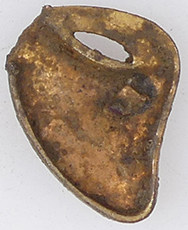 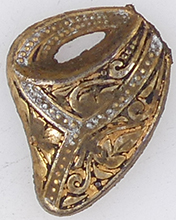 |
|
| Georgian buckle | 18thC toy cannon | Victorian jewelry item | |
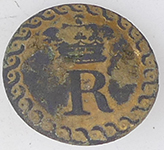 |
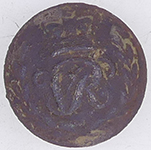 |
|
|
| Crown R button ? | Victorian Royal Engineers button - Crown VR | Medieval purse bar end | |
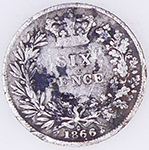 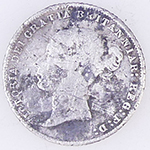 |
 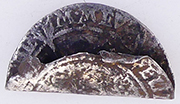 |
||
| 1866 Victoria milled silver sixpence | 16thC Elizabeth 1st hammered silver sixpence | ||
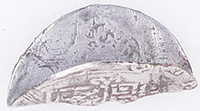 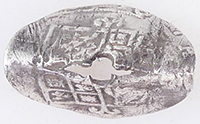 |
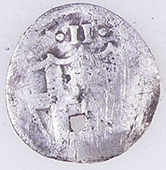 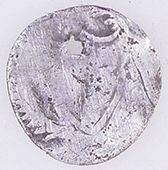 |
||
| 1624 Charles 1st hammered silver shilling | 1649 Commonwealth hammered silver half groat | ||
 |
|
   |
|
| 1900's merchant navy button | Medieval hanging weight | Victorian gilded figurine | |
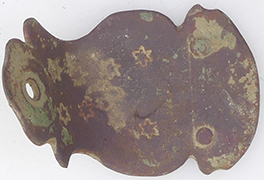 |
 |
|
|
| Victorian mount | 1500-1700 mount | Georgian copper bracelet | |
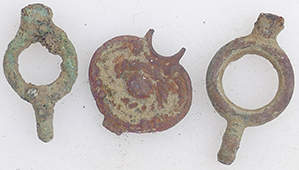 |
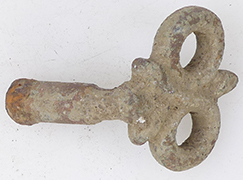 |
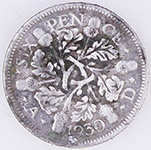 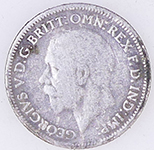 |
|
| Georgian watch winder | Medieval key | 1930 George V milled silver sixpence | |
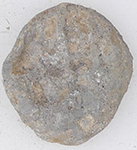 |
 |
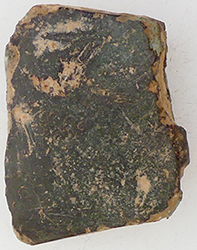  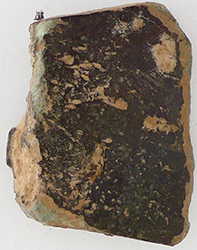 |
|
| Medieval lead token | 1500-1650 buckle | 1500 BC Bronze Age axe head | |
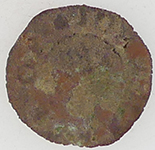  |
|
||
1669 John Hance, clothier of Kevedon Essex hammered copper trade farthing Obv IHI 1669 Ref Norweb 1309 |
Large 17thC hooked clothing fastener | ||
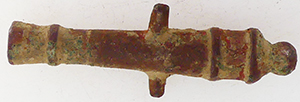 |
 |
||
| 19thC toy cannon | Georgian Plain silver finger ring - worn hall marks - lombardic E date letter | ||
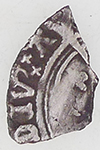 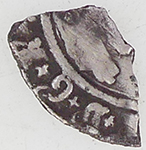 |
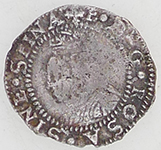 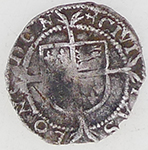 |
||
| 1485 Henry VI hammered silver groat | 1560-1 Elizabeth 1st hammered silver penny - Cross crosslet mint mark | ||
Medieval lead pilgrims ampullae with flower pattern. East Anglia type many made at Walsingham Double V, for Virgo Virginum, Virgin of Virgins, indicating Mary, Mother of God, and forming the W of Walsingham. (The VV symbol has also been used widely as an apotropaic device in house protection.) Pilgrim ampullae - holly water bottle made of lead 12th to 15thC,Mitchiner suggests that many ampullae were used in the annual springtime ’Blessing the Fields’ ceremony, in which the Holy Water they contained was sprinkled on the ground to give prayer for a good harvest. Having served this purpose, Mitchiner suggests that the ampullae were discarded. Others have suggested that the ampullae were buried along with their contents for a similar purpose. It seems to be part of human nature to want to retain some physical object as a connection with a special place or event. Pilgrims have always left for home with souvenirs. Sadly, in the past as today, some are selfish enough to chip away pieces of stones, shrines or statues. It was this sort of vandalism at Christian shrines that led to the appearance of the Medieval trade in pilgrims’ signs or tokens in the 12th century. Such signs, stitched to hats or cloaks, had practical value in offering genuine safe passage for pilgrims on their homeward journeys, even in times of war. They also gave prestige and proof that a person had actually done what they had set out to do. But, more than this, they were regarded as holy in themselves through having been in direct contact with the relics or tomb of a saint. Signs were used as amulets for protection on the way home and to bring healing and other blessings to pilgrims themselves and to their friends and families. They were often buried in fields or placed in wells to bring abundance or weed-free crops, and placed in the home as apotropaic devices. Healing remedies could be made by dipping signs in water or wine to be drunk. It was the shrine to St. Thomas Becket in Canterbury that made souvenir holy water containers popular. People have always gathered water from sacred springs and rivers, but this holy water, it was believed, contained an infinitesimal portion of the blood of the murdered bishop, thoughtfully gathered by the monks who discovered him. The water was believed to effect cures, and the practice soon spread to other shrines, although remaining a particularly English phenomenon. These containers, called ampullae, were usually small, flat, bag-shaped, lead vials. Filled with holy water at the shrine and touched to the saint’s tomb or relic, they were worn hung around the neck. |
|||
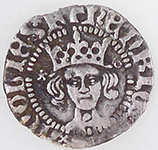 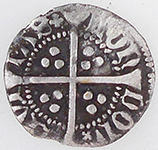 |
|||
Unique coin - probable modified Henry IV die and legend ANGLE Z F + Not recorded legend in the reference books 1413 Henry V hammered silver penny -Mullet and broken annulet by crown - pellet on breast and neck Satire after TAS Obv + hENRIC REX x ANGLE Z F Rev CIVI/TAS+/LOND/DON - London mint |
|||
  |
  |
||
1461 Irish Edward IV hammered silver penny D at centre of reverse cross |
1413 Henry V hammered silver half penny Broken annulet to bust Obv ** ANGL Rev CIVI/TAS/LOND/DON - London mint |
||
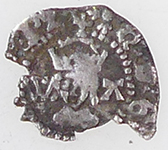 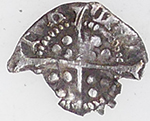 |
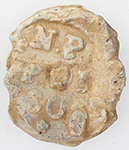 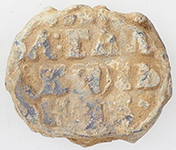 |
||
1509-26 Henry VIII hammered silver half penny WA by hair Archb Warham Rev CIVI/TAS/CAN/TOR - Canterbury mint |
1808 Russian lead bale seal bale seal | ||
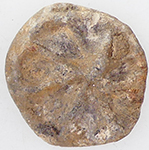 |
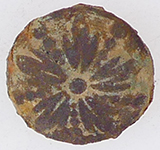 |
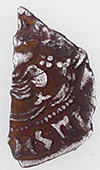  |
|
| Medieval lead token | Georgian button | Medieval hammered silver groat | |
 |
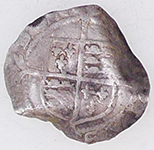 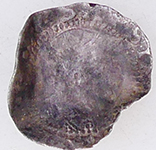 |
||
1640's Civil War iron cannon ball 13oz, 47mm dia -1.9 inches |
16thC Elizabeth 1st hammered silver penny | ||
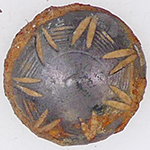 |
 |
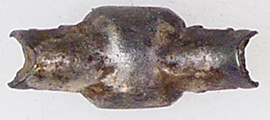 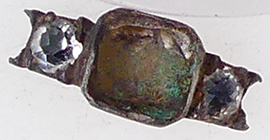 |
|
| 17thC button | Georgian 'England' button | Silver ring with diamonds | |
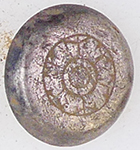 |
 |
|
|
| 19thC navy silver button | Medieval pendant | Vespasian, 1 July 69 - 24 June 79 A.D., Judaea Capta RS96732. Silver denarius, RIC II-1 2; Hendin 6509; BMCRE II 35; RSC II 226; Hunter I 18; SRCV I 2296 |
|
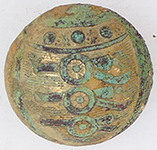 |
 |
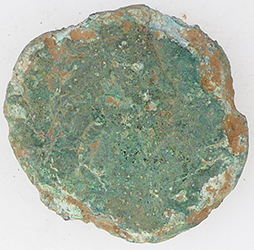 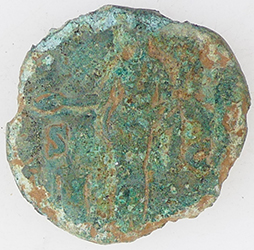 |
|
| 19thC Royal Artillery button | 1500-1700 mount | Huge 2ndC Roman bronze coin - sent for ID 15.49g, 29.3mm dia 5.24mm thick It's definitely a sestertius. See the "S - C" in reverse fields - well, any Roman Æ of this era will have an SC on the reverse somewhere, but these are particularly large and bold letters, given the amount of space available. it's a little light, but that may have to do with what appears to be multiple plow strikes - the surviving diameter is large enough for it to be a sestertiuis. - The obverse doesn't give me much beyond a vague silhouette of the face to work with, but I believe it's probably Antoninus Pius (138-161 AD) Mark |
|
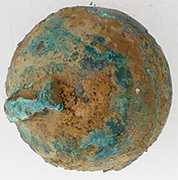 |
 |
  |
|
| Medieval rumbler bell | 19thC toy cannon | 2ndC Roman fibular brooch | |
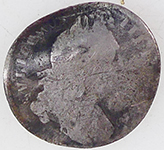  |
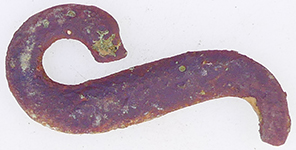 |
||
| 1696 William III milled silver sixpence | Tudor S buckle | ||
 |
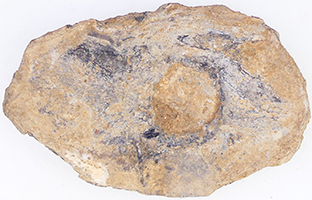 |
 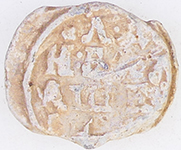 |
|
| 1500-1700 mount | 18thC lead sewing palm guard | 1819 Russian lead bale seal | |
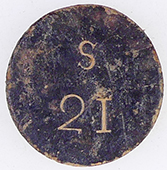 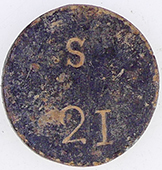 |
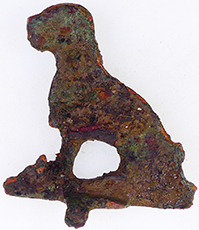 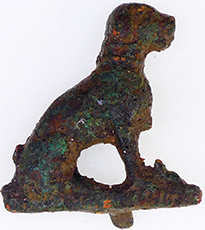 |
||
| 1770's gold guinea coin weight - 21 shillings | Victorian mount | ||
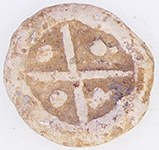 |
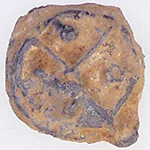 |
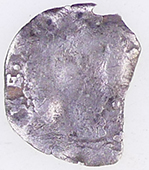 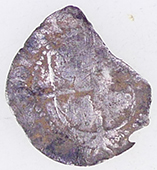 |
|
| 15thC lead token | 15thC lead token | 16thC Elizabeth 1st hammered silver half groat | |
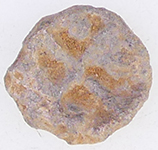 |
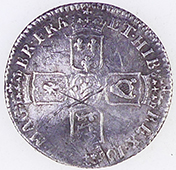 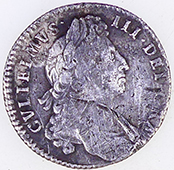 |
||
| 17thC lead token | 1697 William III milled silver shilling | ||
 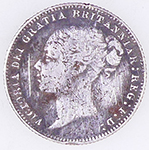 |
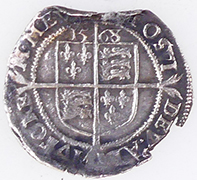  |
||
| 1873 Victoria milled silver sixpence | 1568 Elizabeth 1st hammered silver sixpence | ||
 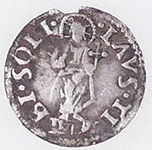 |
  |
||
1501-1521 Leonardo Lauredan, Doge Rev: LAVS TIBI SOLI (Thee Alone be Praised). Haloed figure of Christ holding a cross. Obv: LE LAV DVX S M V (Leonardo Lauredan, Doge. St Mark of Venice.) Doge kneeling before Saint Mark. |
16thC Elizabeth 1st hammered silver sixpence | ||
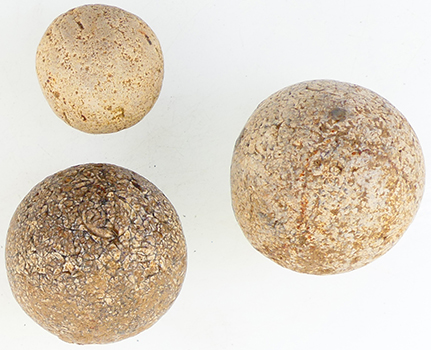 |
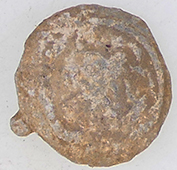 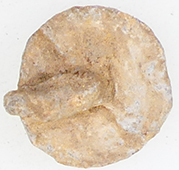 |
||
16thC stone/ musket/cannon balls 5.1g,17.42mm 21g, 27.5mm 24g, 26.99m Stone canon balls, or shot, were made by hand by an experienced stonemason. The process was, and still is (can be made for living history demos but not fired ), a time consuming job. Material would have been any hard natural stone that was available, usually sand stone but sometimes granite. The stone would be hand worked to small radius sections and then rubbed up with a stone block. A reverse section template would be used for accuracy. |
17thC lead mount - rider on horse | ||
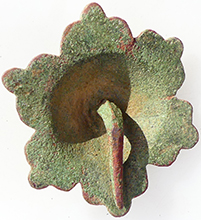 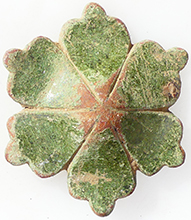 |
  |
||
| Huhe 1400-1700 mount | Medieval hooked mount | ||
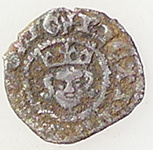 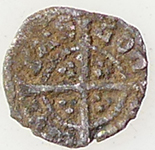 |
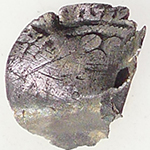 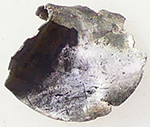 |
||
1377-1399 Richard II hammered silver half penny Obv + RICARD . REX ' ANGLIE ' Rev CIVI/TAS/LON/DON- London mint |
Medieval hammered silver penny | ||
Great find wrapped around a corn stalk |
|||
| Georgian signet ring - ship impression | |||
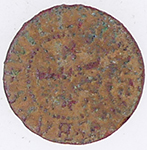 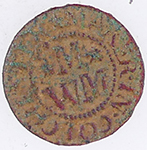 |
  |
||
17thC Willaim Moore, bays maker of Colchester hammered copper trade farthing Ref Norweb 1202 |
1247 Henry III hammered silver voided longcross half penny - Moneyer Nicole | ||
2ndC Roman silver coin sent for ID Obv: IMP CAESAR TRAIANVS HADRIANVS AVG |
|||
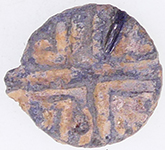 |
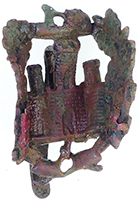 |
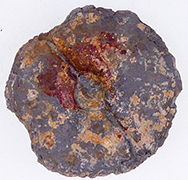 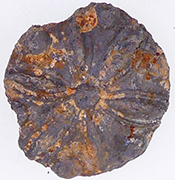 |
|
| 15thC lead token | WWI Essex regiment cap badge | 17thC lead button | |
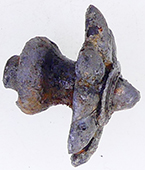 |
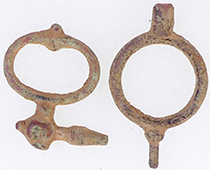 |
  |
|
| Georgian lead tobacco jar lid handle | Georgian watch winders | Unknown copper coin | |
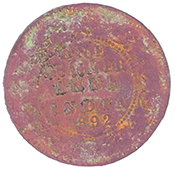 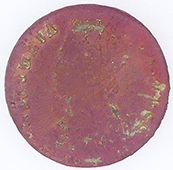 |
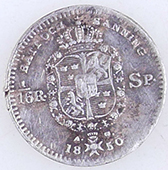 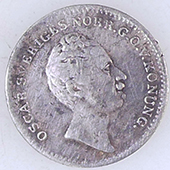 |
||
| India 1892 Victoria milled copper 1 Anna | 1850 Norway 1⁄16 Riksdaler Specie ObverseHead of King Oscar I facing right. Legend around rim. Script: Latin Lettering: OSCAR SVERIGES NORR. G. O. V. KONUNG. Translation: Oscar King of Sweden, Norway, the Goths and the Wends
|
||
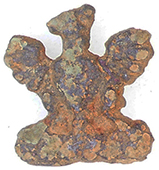 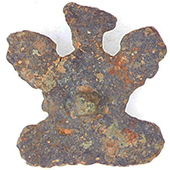 |
 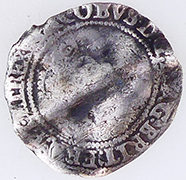 |
||
| Medieval mount | Irish 1603 James 1st hammered silver sixpence | ||
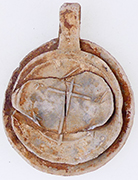 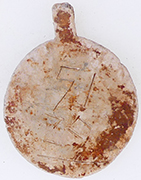 |
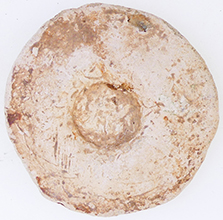 |
||
| Post medieval lead cloth seal | 18thC lead sewing palm guard | ||
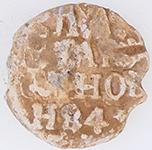 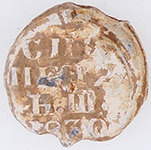 |
  |
||
| 1830 Russian lead bale seal | |||
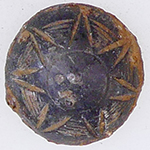 |
 |
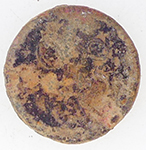 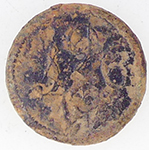 |
|
| 17thC button | 15thC token | 1770's coin weight - 13 shillings and sixpence | |
c 10thC Late Saxon stirrup strap mount Class A Type 11a Sub tringular mount depicts a Lion looking upwards with its front paw raised and tail curled between its legs and over the back
|
|||
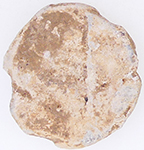 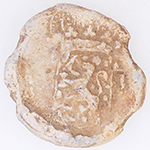 |
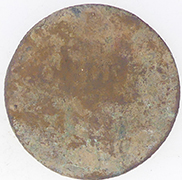 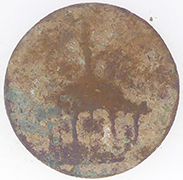 |
||
| Post medieval Dutch lead bale seal | 18thC Condor copper token | ||
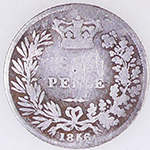 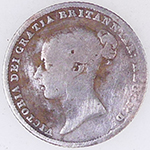 |
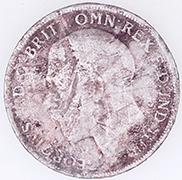 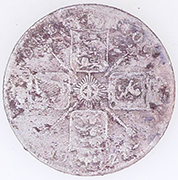 |
||
| 1856 Victoria milled silver sixpence | 1921 George V milled silver florin (24 pence) | ||
  |
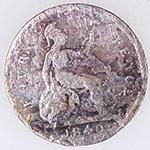 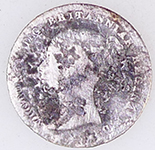 |
||
| 2nd Roman fibular brooch | 1840 Victoria milled silver four pence | ||
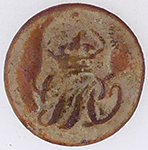 |
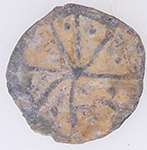 |
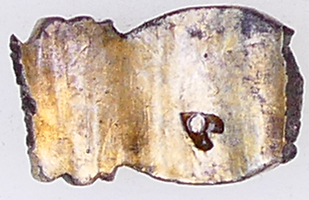 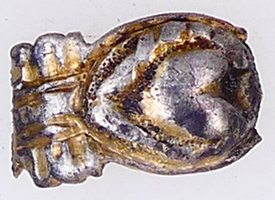 |
|
| Georgian engineers button | 15thC lead token | 16thC golded silver ring - reported as treasure Heart makers mark |
|
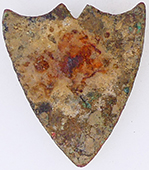 |
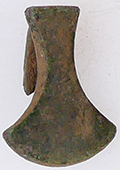 |
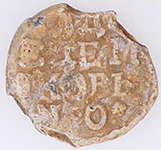 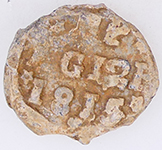 |
|
| 1500-1700 mount | 1500-1700 mount | 1815 Russian lead bale seal | |
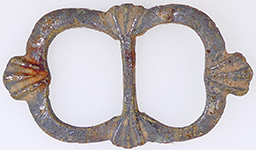 |
 |
||
| 1500-1700 buckle | 18thC toy cannon | ||
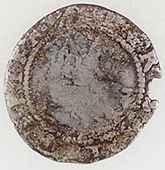 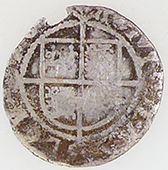 |
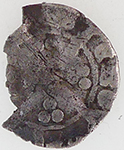 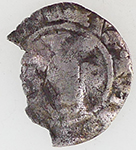 |
||
| 1582 -4 Elizabeth 1st hammered silver half groat -A mint mark | Medieval hammered silver penny- York mint Rev EBO/ |
||
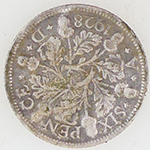 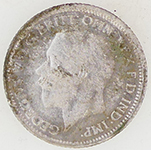 |
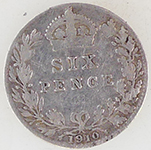 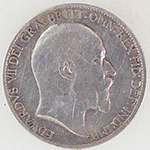 |
||
| 1928 George V milled silver sixpence | 1910 Edward VII milled silver sixpence | ||
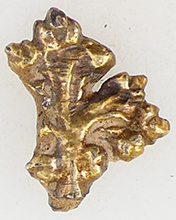 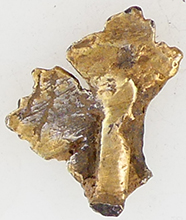 |
|||
| Medieval gilded silver mount - reported as potential treasure | |||
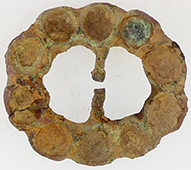 |
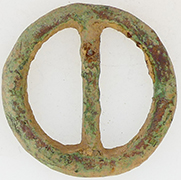 |
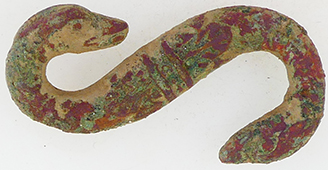 |
|
| Georgian buckle | 17thC annular buckle | Victorian Army S buckle | |
1361- 69 Edward III hammered gold qtr nobel - Treaty period, Large pellet at centre of reverse cross Obv EDWAR DEI GRAC ANGL D 1.93g, 18.95mm |
|||
 |
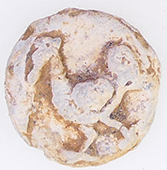 |
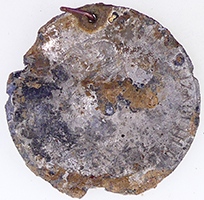  |
|
| 1500-1700 mount | 17thC lead token | 1953 Elizabeth II coronation medallion | |
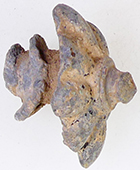 |
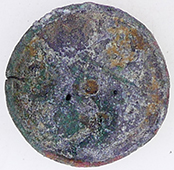 |
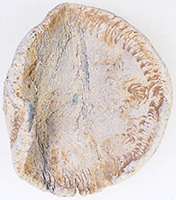 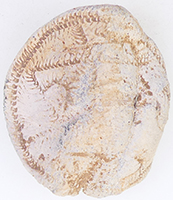 |
|
| Georgian lead tobacco jar lid handle | Georgian trade weight | Post medieval lead trade weight | |
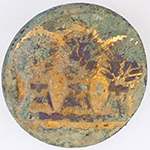 |
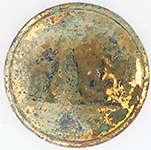 |
 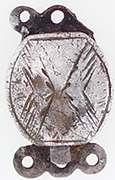 |
|
| 19thC livery button | 19thC livery button | c1790 Georgian silver clasp WT WW makers mark William Turton & William Walbancke |
|
Medieval silver annular brooch - reported as treasure |
|||
|
Previous 2024 April finds page
|
 |
